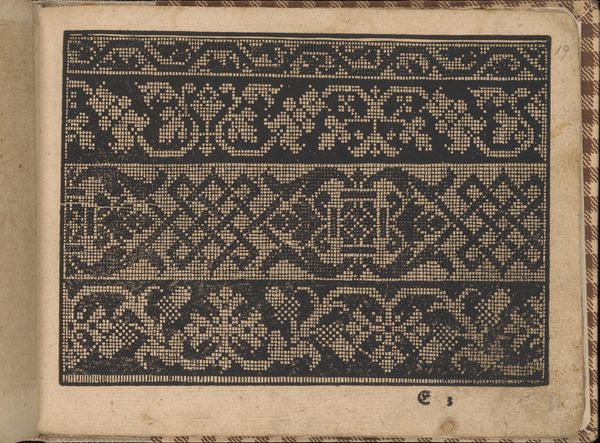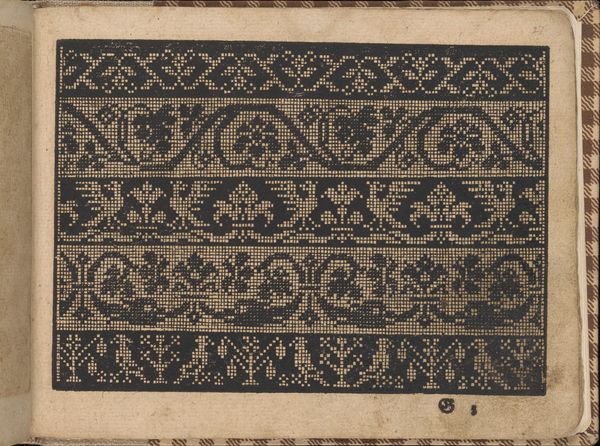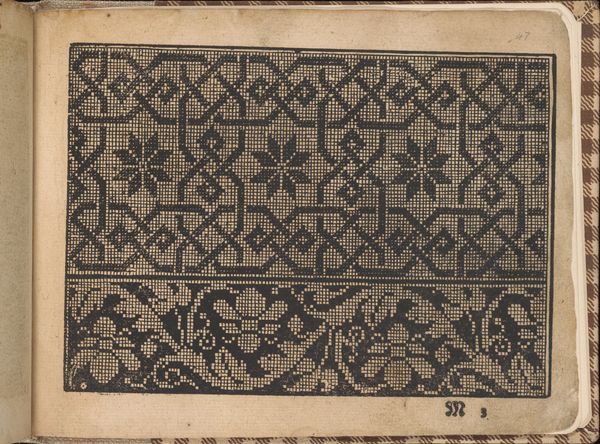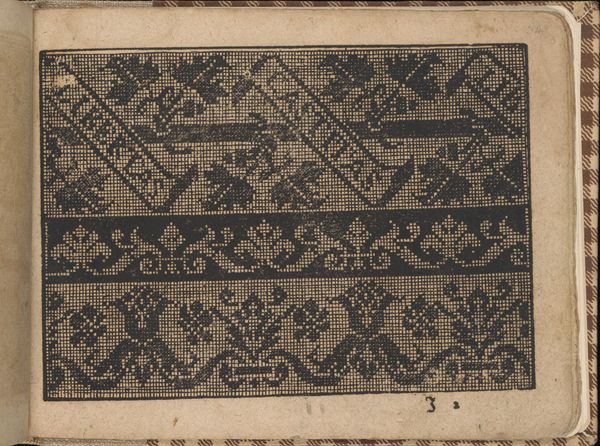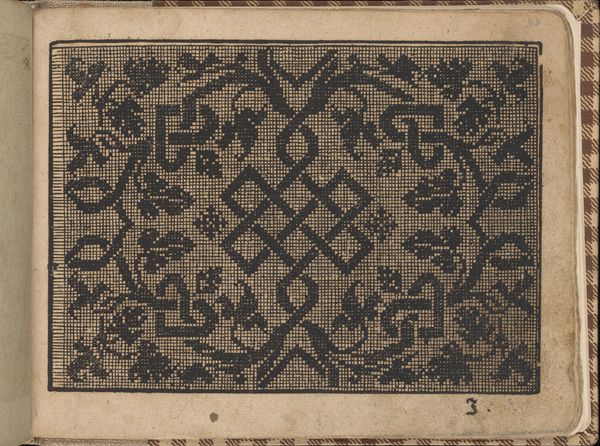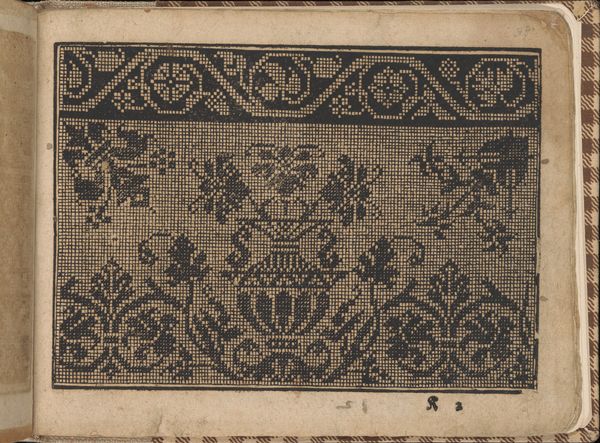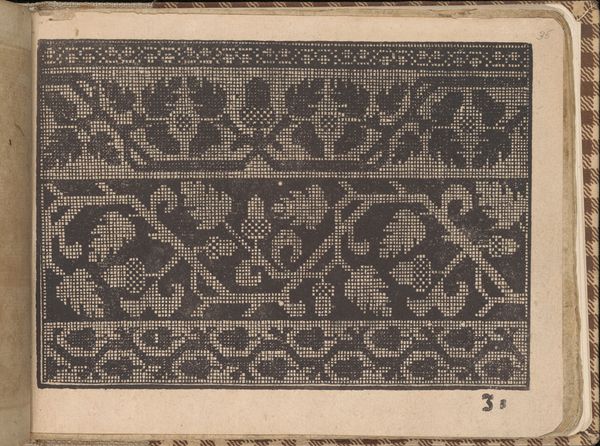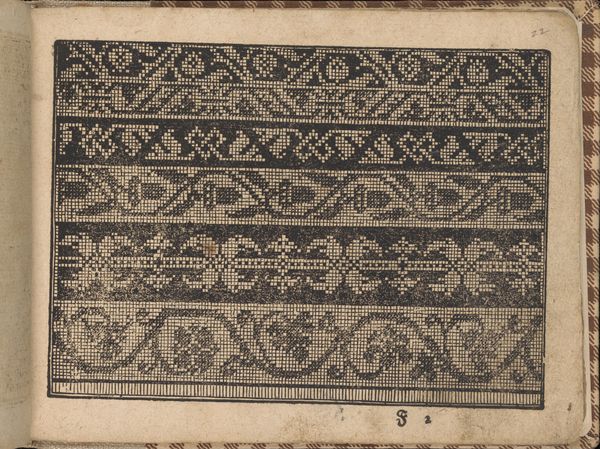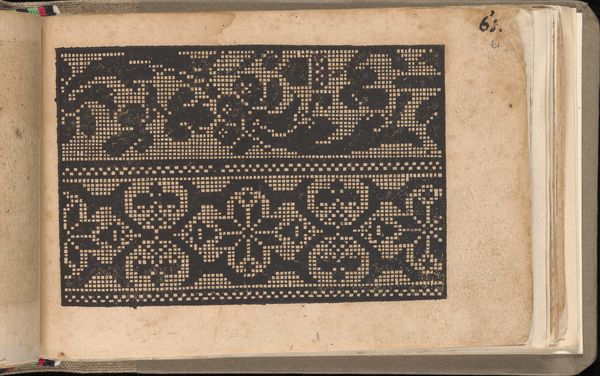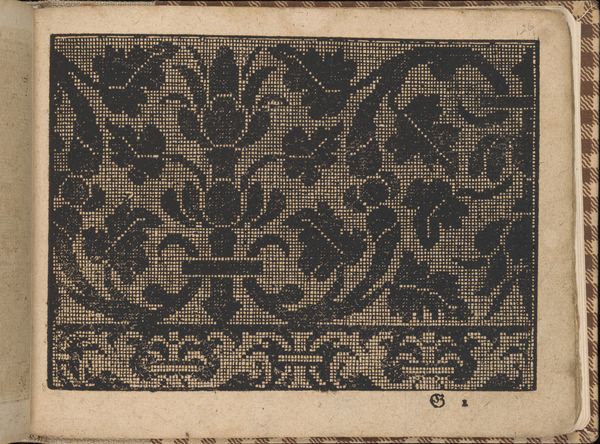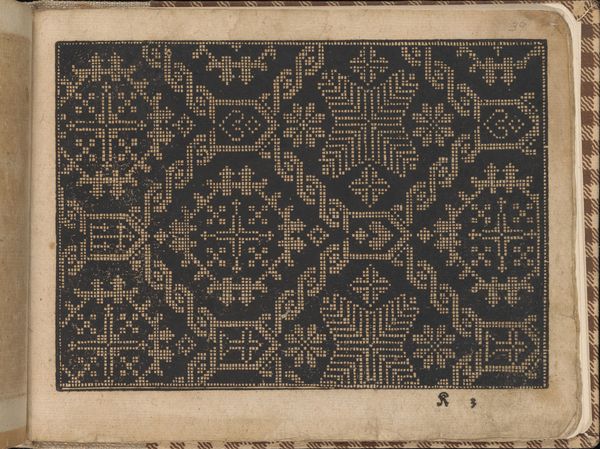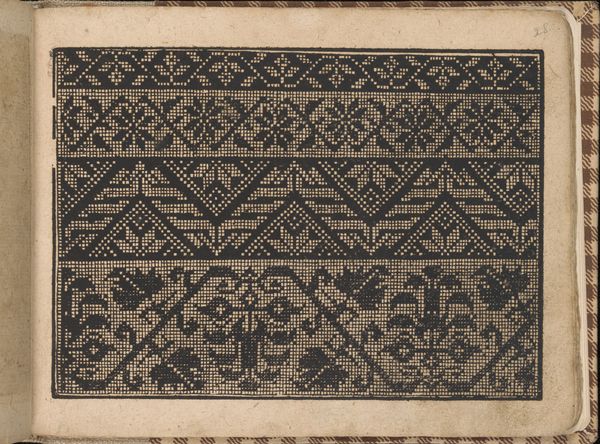
drawing, ornament, print, paper, woodcut
#
drawing
#
ornament
# print
#
paper
#
11_renaissance
#
geometric
#
woodcut
#
line
Dimensions: Overall: 6 5/16 x 8 1/4 in. (16 x 21 cm)
Copyright: Public Domain
Editor: Here we have "New Künftig's Modelbuch (Page 25 recto)," a print by Bernhard Jobin from around 1600. It looks like a page from an ornamental design book. There’s something so intricate yet rigid about the geometric and floral patterns created with the woodcut technique. What do you make of it? Curator: Oh, this takes me back. Imagine artisans poring over these pages, hungry for inspiration! I see this as less about individual artistry, and more as a shared visual language. Those repeating patterns… they’re like echoes of nature filtered through the precision of craft. And that geometric rigidity you mentioned? It's the Renaissance yearning for order, trying to make sense of a world bursting with possibilities. It's funny, isn't it? This balance, or tension, between organic form and structured design. Do you see it as well? Editor: I do! It's like the patterns are simultaneously trying to break free and stay confined. How would this have been used? Curator: It’s a model book, so it would have acted like an early form of instructional material for artists, designers and artisans. People making embroidery, maybe? Thinking of a jeweller using it is also within the realm of possibility! But what strikes me is the almost mathematical beauty of it. Think of all the calculation involved to lay that out for woodcutting. It seems pretty intense. Editor: I didn’t really think about all of the calculation at all. It's fascinating to think about math and nature working hand in hand back then, informing art. It’s interesting. Curator: Absolutely, isn't it? We tend to separate those disciplines, don't we? And here, it is clear, those categories are useless!
Comments
No comments
Be the first to comment and join the conversation on the ultimate creative platform.

